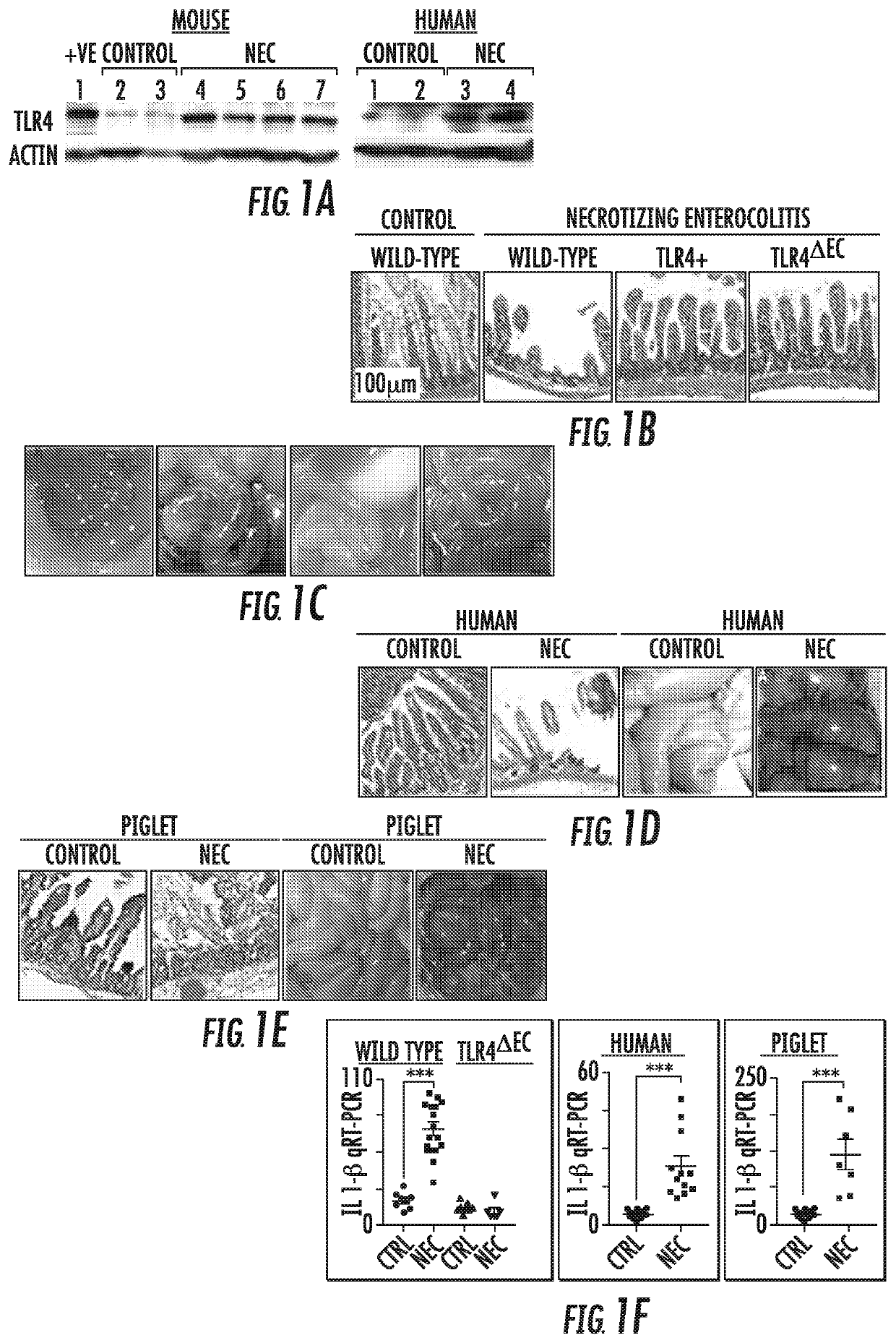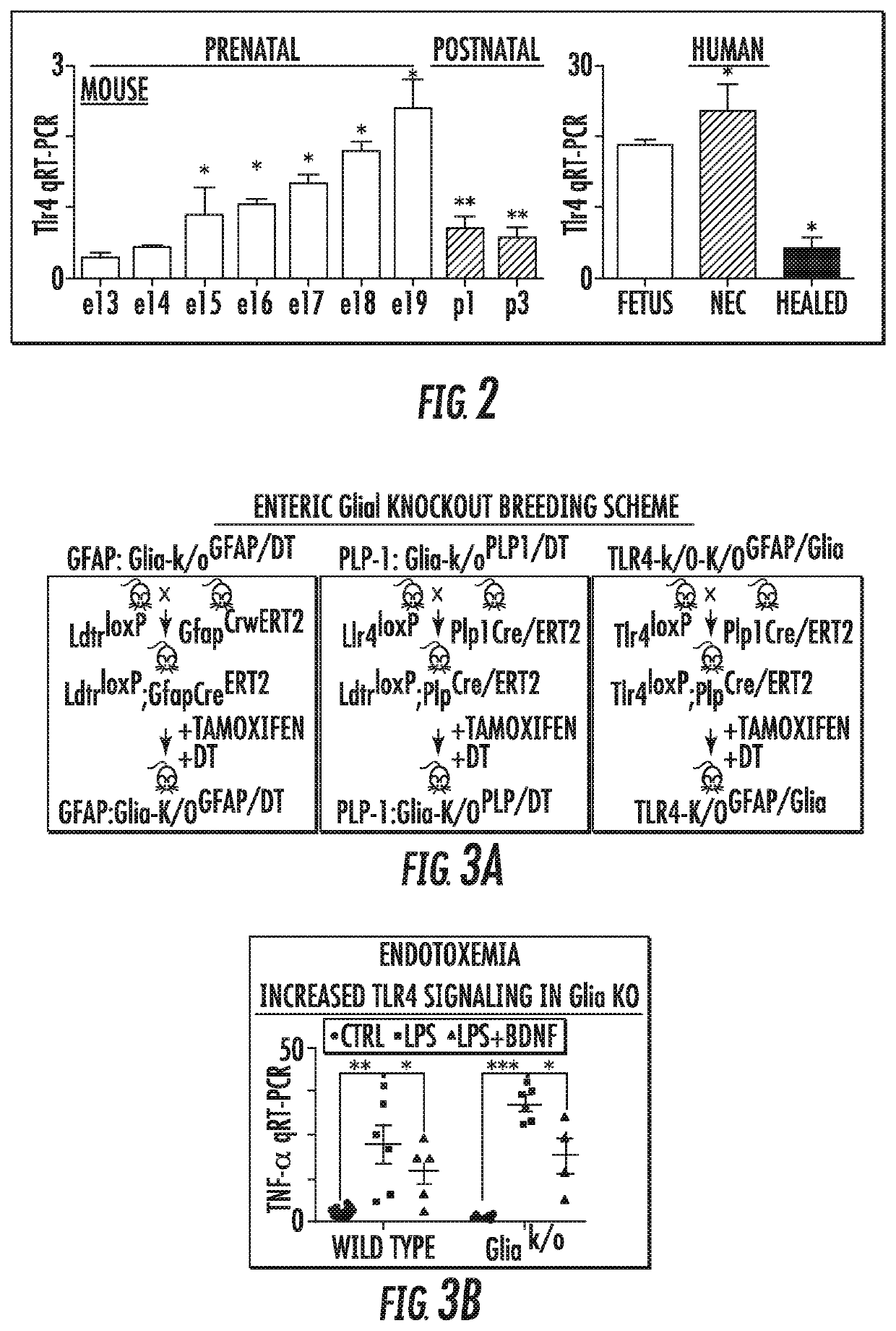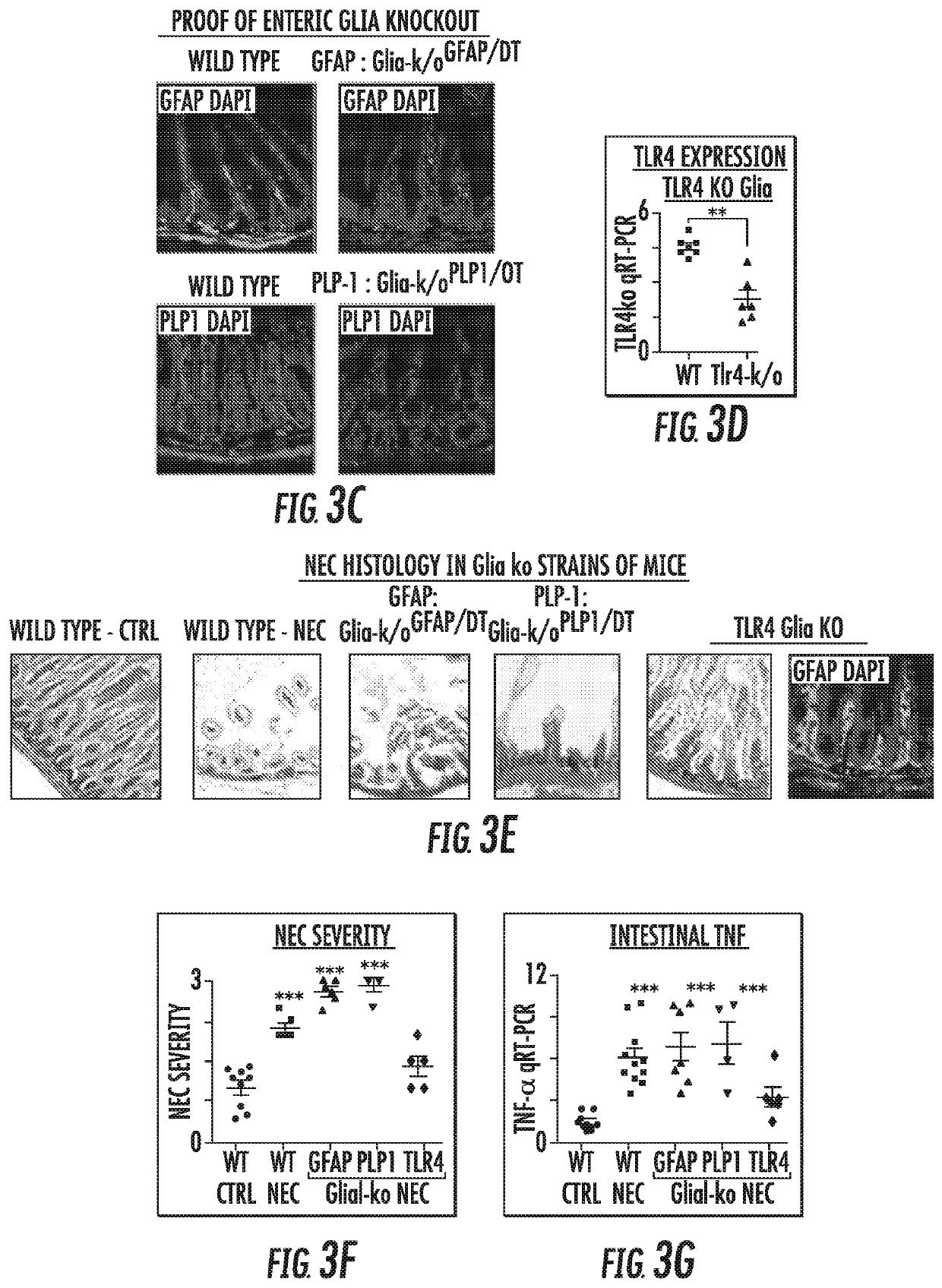Compounds and treatments that enhance enteric nervous system function
a technology of enteric nervous system and compounds, applied in the direction of drug compositions, peptide/protein ingredients, unknown materials, etc., can solve the problems of incomplete understanding of the pathways that mediate this heightened pro-inflammatory response, and the strategy to reverse i
- Summary
- Abstract
- Description
- Claims
- Application Information
AI Technical Summary
Benefits of technology
Problems solved by technology
Method used
Image
Examples
example 1
[0132]The development of NEC requires TLR4 activation in the premature intestinal epithelium.
[0133]The present inventors have discovered that the development of NEC requires activation of the receptor for lipopolysaccharide (LPS), namely Toll-like receptor 4 (TLR4), in the premature intestinal epithelium by microbes that colonize the gastrointestinal tract, findings which are now supported by many other labs. Specifically, as shown in FIG. 1, mice that lack TLR4 in the intestinal epithelium (herein referred to as TLR4ΔIEC mice) or globally (TLR4−.−), are protected from the development of NEC as compared with wild-type mice, when subjected to our well validated NEC model.
[0134]In the inventors' NEC model, 7d old mice are gavaged with a combination of Similac Advance infant formula (Abbott Nutrition):Esbilac canine milk replacer (PetAb) in a 2:1 ratio at 50 μl / g every 3 hours, and subjected to 10 minutes of hypoxia (5% O2 95% N2 in a Billups-Rothenberg chamber) twice daily for four da...
example 2
[0136]The enteric glia restrain TLR4 signaling in the intestinal epithelium and prevent NEC.
[0137]Enteric glia are a component of the enteric nervous system (ENS), a complex network of neurons and glia that controls many aspects of bowel function. While enteric neurons govern intestinal motility, enteric glia support the neurons around which they are located, and maintain the intestinal epithelial barrier, given their location in the lamina propria. In a study by Bush et al., mice selectively lacking enteric glia developed spontaneous fulminant jejuno-ileitis that resembled NEC. This result was confirmed by Savidge et al. who showed that glial ablation led to intestinal injury via barrier dysfunction, using a different mouse model. While a recent paper by Rao et al. disputed these earlier findings by attributing the prior results to epithelial effects, none of the reports examined pups in the postnatal period when NEC develops.
[0138]The present inventors have generated two different...
example 3
[0139]The enteric glia-derived peptide BDNF restrains TLR4 signaling in the intestinal epithelium.
[0140]The inventors provide seven lines of evidence which show that the most abundant glial-derived peptide, namely BDNF, which signals through its receptor Tropomyosin receptor kinase B (TrkB), mediates the protective effects of the enteric glia on TLR4 signaling and NEC development. First, treatment of cultured enterocytes or enteroids derived from wild-type mice (FIG. 5A) with BDNF (1 μg / ml) show reduced TLR4 signaling as manifest by reduced TLR4-induced cytokine expression after treatment with the TLR4 ligand LPS (50 μg / ml). Second, injection of BDNF (1 μg / kg) into wild type mice significantly reduced TLR4-mediated expression of the pro-inflammatory cytokines (FIG. 5B) in the intestinal mucosa 6h after LPS injection; protection was seen in ileum from NEC patients (IRB 00094036) treated with BDNF (FIG. 5C). Third, oral administration of BDNF (1 μg / kg) on each day of the model signifi...
PUM
| Property | Measurement | Unit |
|---|---|---|
| MW | aaaaa | aaaaa |
| volume | aaaaa | aaaaa |
| concentrations | aaaaa | aaaaa |
Abstract
Description
Claims
Application Information
 Login to View More
Login to View More - R&D
- Intellectual Property
- Life Sciences
- Materials
- Tech Scout
- Unparalleled Data Quality
- Higher Quality Content
- 60% Fewer Hallucinations
Browse by: Latest US Patents, China's latest patents, Technical Efficacy Thesaurus, Application Domain, Technology Topic, Popular Technical Reports.
© 2025 PatSnap. All rights reserved.Legal|Privacy policy|Modern Slavery Act Transparency Statement|Sitemap|About US| Contact US: help@patsnap.com



